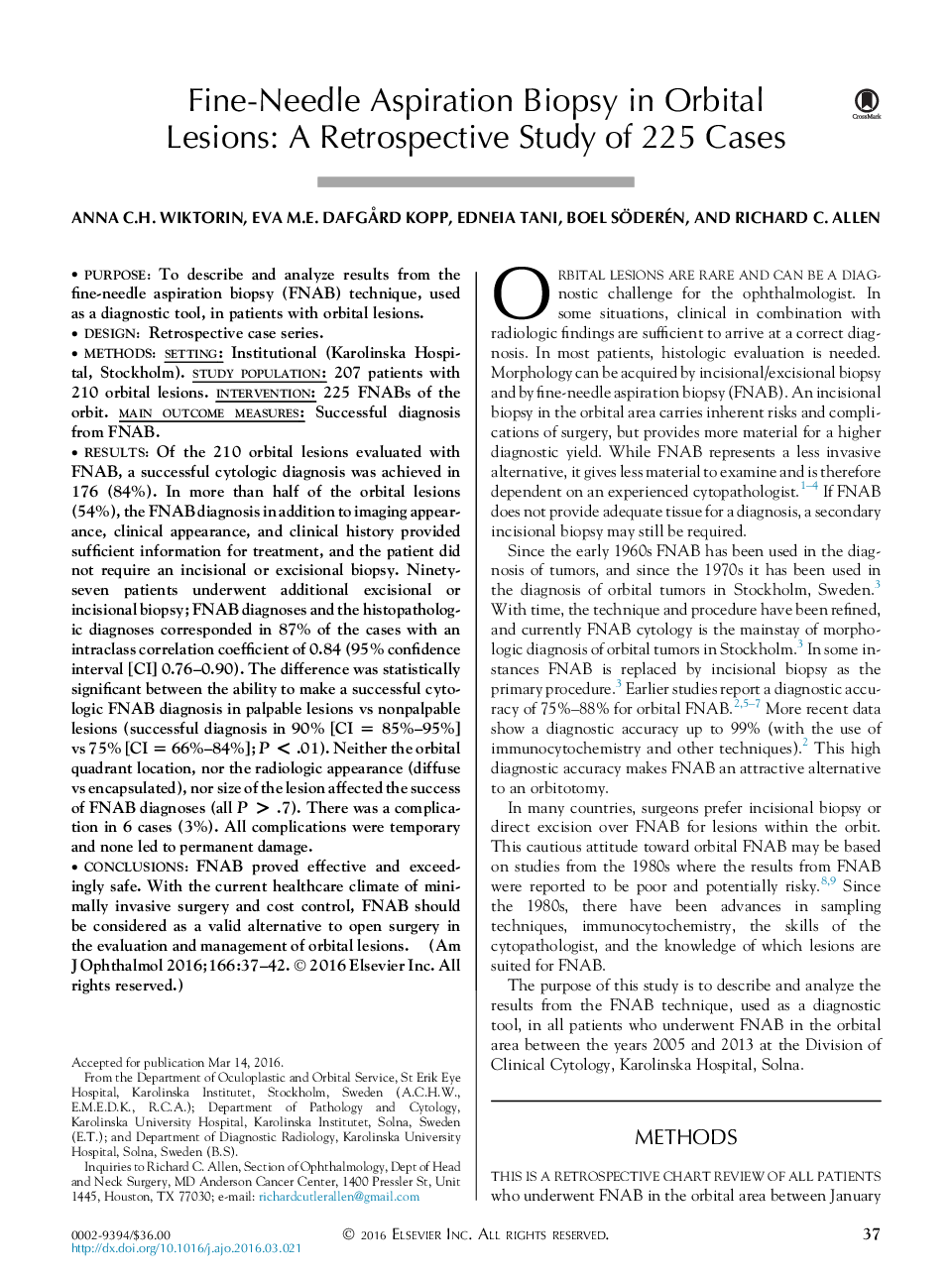| Article ID | Journal | Published Year | Pages | File Type |
|---|---|---|---|---|
| 6194789 | American Journal of Ophthalmology | 2016 | 6 Pages |
PurposeTo describe and analyze results from the fine-needle aspiration biopsy (FNAB) technique, used as a diagnostic tool, in patients with orbital lesions.DesignRetrospective case series.Methodssetting: Institutional (Karolinska Hospital, Stockholm). study population: 207 patients with 210 orbital lesions. intervention: 225 FNABs of the orbit. main outcome measures: Successful diagnosis from FNAB.ResultsOf the 210 orbital lesions evaluated with FNAB, a successful cytologic diagnosis was achieved in 176 (84%). In more than half of the orbital lesions (54%), the FNAB diagnosis in addition to imaging appearance, clinical appearance, and clinical history provided sufficient information for treatment, and the patient did not require an incisional or excisional biopsy. Ninety-seven patients underwent additional excisional or incisional biopsy; FNAB diagnoses and the histopathologic diagnoses corresponded in 87% of the cases with an intraclass correlation coefficient of 0.84 (95% confidence interval [CI] 0.76-0.90). The difference was statistically significant between the ability to make a successful cytologic FNAB diagnosis in palpable lesions vs nonpalpable lesions (successful diagnosis in 90% [CIÂ = 85%-95%] vs 75% [CIÂ = 66%-84%];Â PÂ <Â .01). Neither the orbital quadrant location, nor the radiologic appearance (diffuse vs encapsulated), nor size of the lesion affected the success of FNAB diagnoses (all P > .7). There was a complication in 6 cases (3%). All complications were temporary and none led to permanent damage.ConclusionsFNAB proved effective and exceedingly safe. With the current healthcare climate of minimally invasive surgery and cost control, FNAB should be considered as a valid alternative to open surgery in the evaluation and management of orbital lesions.
